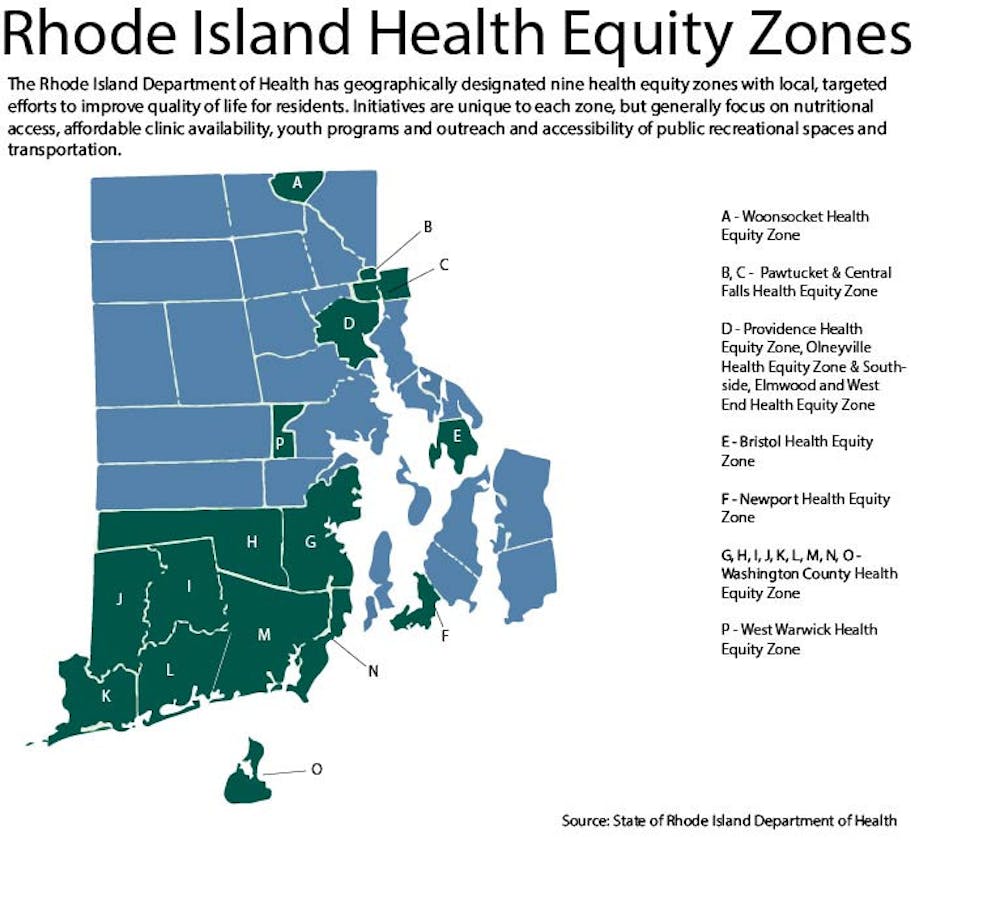Non-profit community-based organizations and qualified municipalities have until March 15 to submit proposals for funding from the Rhode Island Department of Health, which follows the department’s announcement of a $1.4 million expansion in funding for Health Equity Zones.
The expansion reflects RIDOH’s aim to decrease health disparities across the state by focusing on Health Equity Zones, which are geographically defined, economically disadvantaged areas with documented health risks.
“The premise behind Health Equity Zones is to look at health and wellness through the lens of geography because both chronic and infectious diseases tend to cluster geographically,” said Amy Nunn, associate professor of Behavioral and Social Sciences and executive director of the Rhode Island Public Health Institute.
Existing HEZs and new communities seeking to create HEZs can apply to enter a one-year contract of up to $150,000 that starts July 2019. The contract may be renewed for up to four additional years, depending on vendor performance and the availability of funding, according to a RIDOH press release. Once the funding decisions have been made, “we will absolutely lay out exactly what the visions are for the different applicants and how the funding will be used,” said Joseph Wendelken, spokesman for RIDOH.
Nine Health Equity Zones already exist in Rhode Island, one of which is in Providence. “We have seen a tremendous amount of success with those nine HEZs, and it is based on that success that we are really looking to extend,” Wendelken said.
The program began under RIDOH’s Director Nicole Alexander-Scott, who cited various health inequities across the state in a 2015 Op-Ed in The Providence Journal. Alexander-Scott cited a study that showed African American infants in Rhode Island to be two times more likely to die before their first birthdays than white infants, in addition to a finding that Rhode Islanders who make less than $50,000 a year are twice as likely to have diabetes as those who make more than $50,000.
Wendelken noted that an expansion in the HEZ initiative could work toward further decreasing these disparities. “Everyone should have an equal opportunity to be healthy, no matter what zip code they live in,” he added.
The expansion of HEZs in Rhode Island demonstrates the state’s leadership in geographically-focused public health initiatives, Nunn said. “Rhode Island is one of few states that is really trying to scale this kind of community-led intervention up in the public sector,” she added.
“The initiative is about allowing communities to come together and identify what they see to be the most pressing health outcomes in their neighborhoods, and helping them put interventions in place to address those issues,” Wendelken said.
The city’s HEZ is run through the Healthy Communities Office, which “holds regular dialogue with community-based agencies … about how to work together to improve health outcomes for Providence’s underserved communities,” wrote Ben Smith, deputy director of communications for Mayor Jorge Elorza, in an email to the Herald.
HCO’s goals include increasing access to locally-produced foods in public schools, integrating nutrition education into the school day and developing plans for successful school gardens.
The office also led the charge on instituting a pilot program to make free menstrual products more accessible in public schools, The Herald previously reported.





